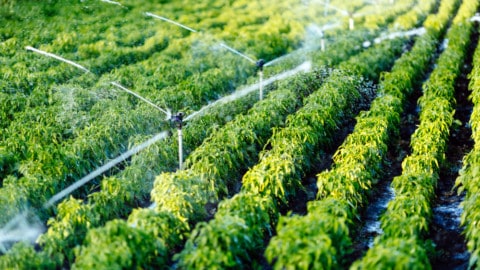When you’re in the market for an engine to power your irrigation pump, what should you look for? The short answer is: that depends. With that in mind, we spoke to a few pump dealers about the top four questions to ask before buying an irrigation engine. Here’s what they suggested.
 What kind of horsepower do you need?
What kind of horsepower do you need?
Your search for the right engine starts with speaking to a pump expert who can determine which will best suit your pump’s needs.
Electric motors can be more efficient, have lower maintenance requirements and are easier to control via automated systems. They are also quieter and more user-friendly. However, they aren’t always feasible in remote areas where grid connection costs are steep.
By comparison, the best diesel motors can deliver sustained performance, great torque and excellent fuel economy – letting you move more water with less fuel and enjoy lower ongoing engine service costs.
What RPM works best for your needs?
Always calculate your power needs exactly, allowing for power losses. Creating a pump curve can help you decide what will work for you.
Remember, your engine must be measured at a continuous rather than variable (intermittent) horsepower rating.
Normal engines idle and accelerate while a pump runs at a continuous rate, and your engine needs to match that required horsepower.
For example, selecting a 30kW (40HP) motor doesn’t mean it’s always drawing 30kW – it will only be operating at maximum when the pump flow rate is well beyond the nominal flow rate.
It’s also important to take into account the ambient conditions (e.g. temperature, altitude, humidity) in which your pump will run and how this will affect the system.
What type of drive do you need?
How will your pump be driven? There’s a wide range of options when it comes to drives – direct drives (inline shaft), pulley drives with v-belts and pulley drives with cam belts.
Does your pump engine need a clutch? A v-belt driven pump can be matched with a smaller engine running at a higher speed and requires a crank on one side to offset the ‘pull’ of the belt. Inline shafts deliver power more directly and efficiently.
Variable speed drives (VSDs) deliver a variety of speeds so your pump runs on the best rate for the water it’s moving.
What type of engine/pump control panel do you want?
How long is a piece of string? If you want something simple, your stock standard option is a key switch with warning lights and an engine stop button for low oil pressure or high coolant temperatures.
From there you can customise to your heart’s desire, adding tachometers, hour meters, a 24 hour clock, remote start and even options to control start and view diagnostics via your smartphone.
When you have to depend on reliability, Kubota’s large output four-cylinder engines provide the
ultimate in performance, reliability and durability. Engine power packs are fully assembled with
world class components.



















